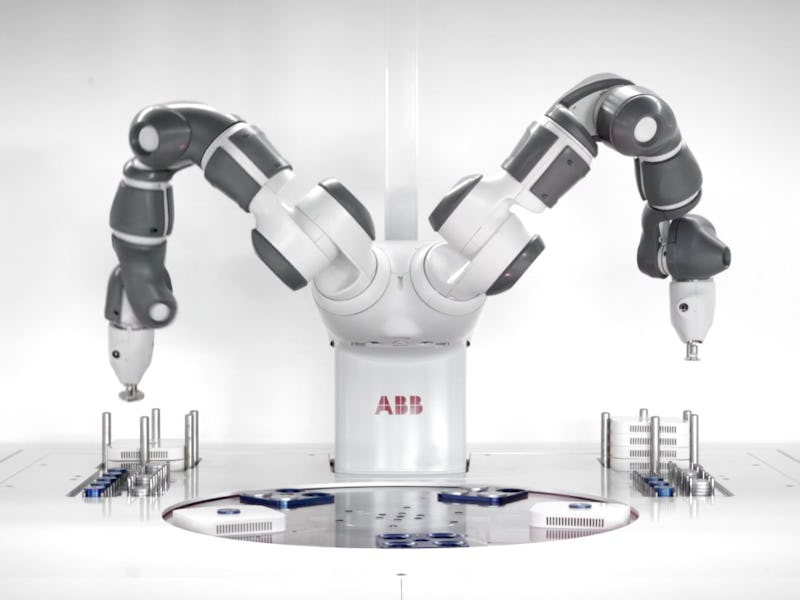New cellular networks are going to enable self-driving cars and robot automation, creating new factories where man and machine can work together to tackle big projects.
That was the prediction from Rajeev Suri, president and CEO of Nokia, who told attendees at Mobile World Congress in Barcelona on Wednesday that 5G technology would be necessary to wirelessly connect technology of tomorrow.
Take for example 3D printing. At the moment, if your car needs a new muffler, you go to the parts store, they order it in from the manufacturer (possibly from overseas), they fit it, and the whole process takes a few weeks. In the future, the car could detect that it’s going to need a new muffler soon, send the request to a virtual parts store, and then that store can 3D print the part for immediate pickup. When the car gets home, a personal robot could install the part for you, freeing people up to relax.
“I don’t know about you, but that sounds pretty good to me,” Suri said. But he noted that a lot of the steps in the above, like the car speaking to the store and the robot speaking to the car, will require cellular connectivity. Not just any cell connection, though, but to make it happen, “we need 5G.”
Rajeev Suri, president and CEO of Nokia, speaking at Mobile World Congress.
It’s not just about having a faster download speed of 10 gigabits per second, although that is useful. The 5G standard introduces a number of technologies that ensure mission-critical data doesn’t slow down. This includes adaptive antenna, where the transmitters adapt the beam to achieve a higher quality signal to the destination. This stops unexpected slowdowns while data is being transferred.
The ultra-low latency that 5G introduces will mean self-driving cars and robots can depend on cellular connections to transmit important information. Telecommunications companies like AT&T are vocal about their interest in using 5G to help cars transmit collision data and maps, while Mobileye is already exploring a system where car cameras can build up maps and transmit them to help make autonomous vehicles work better.
In the future, the technology could help robots work together with humans in factories. Suri showed Jason Elliott, a 5G market development manager for Nokia, standing alongside a robot building base stations for the company. Elliott was able to place his hand near the robot, and thanks to 5G’s low latency, the machine could stop working and move safely around Elliott. To celebrate man and machine’s potential to work together on the factory floor, Elliott took a selfie with the robot.
It may be able to build base stations, but considering how the robot is barely in the picture, it seems Nokia hasn’t quite automated the selfie just yet.
